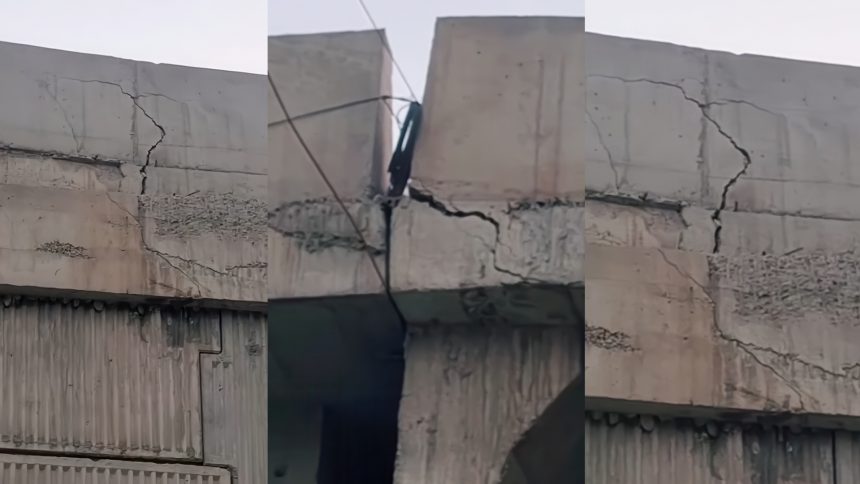Srinagar, June 15: Barely a year after its inauguration in June 2024, Bemina flyover in Srinagar has developed visible cracks along its surface, raising serious safety concerns among commuters and residents. The cracks, which have appeared along the joints between concrete slabs, have drawn widespread criticism, with many questioning the flyover’s durability and the quality of its construction.
The one-kilometre-long, four-lane flyover, built at a cost of Rs 31.49 crore by the Roads & Buildings (R&B) Department, was meant to ease traffic congestion along the busy Srinagar-Baramulla stretch of NH-44. Touted as a key infrastructure project, it was expected to streamline traffic and reduce delays, particularly in the high-traffic Bemina area.
However, photos of the damaged sections of the flyover, showing visible cracks, have gone viral on social media, leading to widespread public criticism. Residents and commuters have raised concerns over the structural integrity of the flyover and questioned whether adequate oversight was maintained during construction and post-completion inspections. Many are demanding that the route be temporarily closed until a thorough safety assessment and proper repairs are carried out.
“It’s concerning to see such damage so soon after the flyover opened,” said Imran Peerzada, a resident of Bemina. “We use this flyover every day, and now we’re worried about its safety.”
Suhail Bazaz, a commuter, said the cracks had left people uneasy. “If the structure was solid, this wouldn’t have happened within a year. Authorities must shut it down for a full inspection,” he said.
Zahid Bukhari, another resident, said the situation points to possible lapses in construction standards. “How can such an expensive project show signs of damage so soon? It clearly suggests poor execution or lack of proper supervision,” he said.
Sajjad Bhat, another resident, said the authorities must not take the issue lightly. “We’ve seen bridges collapse in other states with tragic consequences. Why wait for something like that to happen here? The government should conduct a full safety review of this flyover before it’s too late. People’s lives are at stake.”
Responding to these concerns, Chief Engineer of Roads and Buildings, Sajad Naqeeb, said the cracks are “not a cause for alarm” and attributed them to seasonal temperature changes and natural settling processes. “These are common issues seen in concrete structures, particularly during seasonal transitions,” he said.
Naqeeb further clarified that the cracks are confined to the approach slab area and do not affect the main structure of the flyover. “These are surface-level cracks and do not compromise the overall structural integrity. There’s no need to close the flyover,” he assured, adding that immediate corrective measures, including grouting, re-compaction, and surface repairs, are already underway.
A technical committee has also been formed to assess the situation. “The committee will conduct a thorough evaluation and recommend any additional measures if needed to ensure public safety,” Naqeeb said.
Despite these reassurances, many locals remain cautious about the flyover’s safety. “It’s better to avoid the route for now. Authorities always say there’s no danger—until something tragic happens,” said Imtiyaz Shah, a resident of Lal Chowk.
As the debate continues, the flyover remains open to traffic. While officials maintain the structure is safe, the incident has reignited broader concerns about construction quality and the long-term reliability of public infrastructure projects across the region.
Barely a year old, Bemina flyover develops cracks
Residents demand temporary closure over safety concerns

Leave a Comment Leave a Comment






